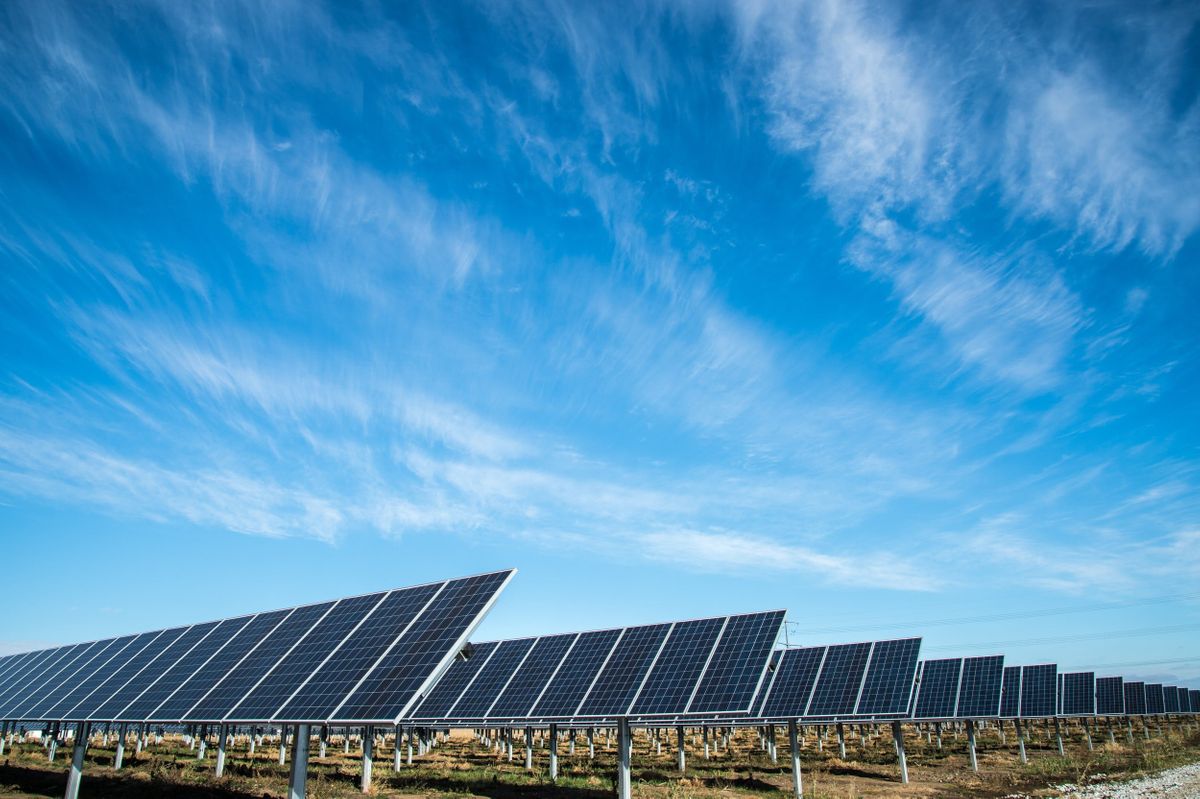Solar power is a great alternative to fossil fuels when it comes to producing electricity for your home, office, or school. We’ve talked about the difference between on-site and community solar, and shared some incentive options to offset the costs of a renewable energy project. What if your solar array produces more energy than you need? There are two strategies for excess energy: storing it in batteries, or sending it back to the electric grid.
With battery storage, excess solar energy charges the battery, then when panels aren’t producing, the battery is used to power the building. Even though there are more battery options available now compared to a few years ago, there is still some confusion over whether batteries are helpful to consumers. This is (like many other aspects of energy use) dependent on the utility and usage of the customer. The quick answer is that batteries give users more control over where their electricity comes from, even when the sun isn’t shining, but it may or may not be more cost effective depending on how a particular utility credits their customers for giving excess production back to the grid.
Many states and utilities have policies about net metering for electricity customers, which allows customers to send excess solar power generated on-site back to the grid and receive a credit on their account. The credit can then be used for their electricity needs when their panels are not producing (e.g., overnight). Customers can save money because they pay for fewer kWh from the grid due to the credits from their excess generation. In states where utilities use net metering, it’s usually better financially to send excess generation to the grid and receive credits to offset grid electricity needs.
There are some cases when having battery storage for excess solar generation can be cost effective. One is if a state or utility does not have net metering, or if they offer credits worth less than the standard price per kWh. If this is the case, storing excess generation in a battery instead of sending it back to the grid for a reduced rate means that customers aren’t losing money by receiving a credit that doesn’t equal the cost of kWh from the grid. Check out the Database for State Incentives for Renewables & Efficiency (DSIRE) for information on state net metering policies.
Another time when battery storage can be helpful is when customers are on time-of-use rates. Time-of-use (TOU) rates charge different rates per kWh based on the time of day during which customers are using electricity. Peak hours, when more people are using electricity, cost more than off-peak hours when overall electricity use is down. Installing a battery provides flexibility about where electricity comes from and when (for example, using electricity from the battery during expensive peak hours, and pulling from the grid during less expensive non-peak times).
Reach out to Fusebox to dig deeper and learn more about how solar would impact your building and electricity use.
Check out Laurel’s other blog posts!
- Managing Humidity In Our Buildings
- DEMANDing Reductions
- Electricity in the Summer
- Demand vs. Consumption - Electricity is Complicated!
- Better Indoor Air Quality Means Happier (and Healthier) Occupants
- Who Decides the Utilities’ Rates?
- What is a Regulated vs. Deregulated Utility?
- Incentives for Solar and Renewables
- On-Site Solar vs. Community Solar - What Should You Do?
- Energy Benchmarking Is Becoming Mainstream
- The Cost of Water is Increasing…Now What?
- Gift-Giving For The Energy and Sustainability-Minded
- Water Reuse is Water Conservation!
- Tracking and Reducing Water Use in Your Building
- Teachers as Energy Conservation Champions in Schools
- Plug Loads and Commercial Office Tenants
- Communicating Energy Conservation With Residential Tenants
- Water, Waste, and Cleaning Of Buildings In A Post-COVID World
- Energy Management In Buildings In A Post-COVID World

